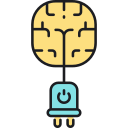
Navigating The Impact of Social Media on Mental Well-being
Chosen theme: The Impact of Social Media on Mental Well-being. Join a thoughtful, hopeful exploration of evidence, lived stories, and practical rituals that help you reclaim attention, empathy, and joy when you connect online. If this resonates, subscribe to stay updated and share your journey with our community.
How Feeds Shape Feelings: Understanding the Digital Mind
Dopamine Loops and Variable Rewards
Apps are designed with unpredictable rewards—likes, mentions, and new content—that trigger dopamine spikes and keep you checking. Over time, this can amplify anxiety and compulsive behaviors, especially during low-mood periods. Notice your personal triggers, set intentional check-in times, and mute nonessential notifications. Tell us which tiny changes reduced your urge to refresh, and subscribe for weekly behavioral nudges grounded in research.
Comparisons, Identity, and the Mirror Effect
The highlight-reel effect turns ordinary scrolling into constant comparison, subtly eroding self-esteem and distorting identity. Remember: most feeds reflect curation, not reality. Try following accounts that celebrate process over perfection, and unfollow those that fuel insecurity. Share a moment when you reframed an unhealthy comparison, and invite a friend to join this conversation about kinder self-talk online.
Sleep, Blue Light, and the Endless Scroll
Late-night scrolling disrupts circadian rhythms, intensifies rumination, and shortens deep sleep, which compounds stress and irritability the next day. Establish a screen sunset—thirty to sixty minutes before bed—use grayscale mode after dusk, and keep your phone charging outside the bedroom. What bedtime ritual helps you log off? Comment with your routine so others can experiment and learn.
Stories from the Scroll: Real Lives, Real Lessons
After waking to doomscrolling, Maya curated the first five accounts she sees to focus on art, movement, and supportive friends. Within two weeks, her morning anxiety eased, and she reported clearer focus in lectures. She calls it her “gentle start protocol.” Try curating your own first five. Share your results after seven days so we can learn together.
Longitudinal studies suggest small average links between heavy use and lower well-being, but individual differences matter greatly. Snapshot surveys can exaggerate effects by missing personal context—like loneliness pre-dating an uptick in scrolling. Track your own baseline mood and habits for a month to see meaningful patterns. Share your observations to crowdsource better self-knowledge.
What the Research Really Says
Practices to Feel Better Online Today
Design Your Digital Environment
Treat your phone like a room you can rearrange. Move social apps off the home screen, disable push alerts, and enable grayscale during focus hours. Follow accounts that teach, soothe, or genuinely connect, and prune low-value noise monthly. Post your two favorite environment tweaks and tag a friend who might try them with you.
The 30-Day Tiny Experiments Plan
Run weekly experiments: Week 1, scheduled check-ins; Week 2, comment instead of lurk; Week 3, creator empathy break; Week 4, bedtime boundary. Track mood, energy, and sleep in a short journal. Compare before and after. Share your results in the comments, and subscribe for a printable tracker and reminder prompts.
Mindful Posting, Slower Consuming
Before posting, ask: What feeling am I seeking? Connection, validation, or contribution? Add a breath, then refine. When consuming, choose depth over volume—read captions, join thoughtful threads, and pause to reflect. Which mindful question changed your posting? Tell us, so others can adopt it and feel steadier online.
Building Kinder Communities Online
Clear, values-based guidelines, prompt responses to harm, and transparent decisions foster psychological safety. Volunteer moderators need training and rest to prevent burnout. Use pinned resources, conflict channels, and safety check-ins. Which guideline most improved your group’s tone? Share a template to help other hosts craft welcoming spaces.

Co-write age-appropriate agreements: device-free meals, bedroom boundaries, and transparent privacy settings. Revisit monthly as needs change. Focus on shared goals—sleep, safety, and connection—over strict punishments. What clause made your plan actually work? Post it to help other families build sustainable, respectful agreements.

Design Futures: Platforms That Support Mental Health
Transparency and Choice in Algorithms
Offer feed controls by goal—learning, friends, local news—and explain why every post appears. Provide easy switches between chronological and interest modes. When people understand the system, anxiety drops. What control would help you feel calmer while scrolling? Add your idea so we can spotlight user-centered designs.
Safety by Design, Not as an Afterthought
Build friction into harmful loops: gentle pauses after heated exchanges, optional bedtime nudges, and default anti-harassment filters. Streamlined reporting and human review for vulnerable groups matter. Which safety feature have you appreciated recently? Share it to encourage platforms to prioritize well-being from the start.
Measuring What Truly Matters
Shift success metrics from raw time-on-app to indicators like meaningful connections, informed consent, and post-session mood. Invite voluntary well-being check-ins and publish aggregate outcomes. As users, we can vote with attention. Would you opt into mood check-ins if they improved your feed? Tell us why or why not.
